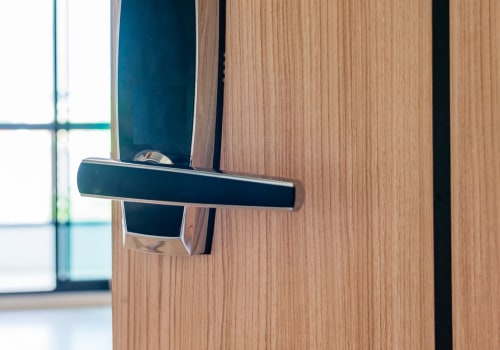Organizations are increasingly relying on data to drive decision-making and ensure compliance. As such, it is essential for organizations to have comprehensive audit data collection procedures in place. This article will provide a comprehensive overview of audit data collection procedures, including how to prepare for an audit, the types of data that should be collected, and best practices for ensuring accurate and complete data collection. The process of audit data collection is a critical step in any HIPAA IT security audit. Organizations must be prepared to collect and analyze the necessary data to identify any risks that may exist.
By taking the time to understand the audit preparation process, organizations can ensure that their data collection procedures are up to date and compliant with HIPAA regulations. This article will provide a thorough overview of audit data collection procedures, including the types of data that should be collected, best practices for ensuring accurate and complete data collection, and strategies for managing the audit preparation process. Audit data collection procedures involve gathering and analyzing information to assess the effectiveness of an organization’s security policies and procedures. The goal is to identify any weaknesses or discrepancies in order to recommend improvements. This can include assessing system access rights, logging activities, and data backup and recovery processes. The data collected can then be used to develop new strategies or refine existing ones. When preparing for a HIPAA IT security audit, it is important to understand the scope of the audit.
This will determine which areas need to be evaluated and what type of data needs to be collected. For example, if the audit focuses on user access rights, then data relating to user accounts, permissions, and passwords may need to be gathered. It is also important to understand the requirements for collecting data, as different organizations may have different regulations. Once the scope of the audit has been determined, it is important to create a plan for collecting and analyzing the data. This plan should include details such as how the data will be gathered, who will be responsible for collecting it, and how it will be stored and secured.
Additionally, it is important to ensure that all stakeholders are informed of the data collection plan and any associated risks. The next step is to identify the tools that will be used to collect the data. These can range from manual processes such as interviews and observations to automated systems such as log files or network scanners. It is important to consider both the accuracy and efficiency of each tool when selecting one for data collection. Additionally, it is important to ensure that any tools used are compliant with relevant privacy regulations. Finally, it is important to establish a process for analyzing the collected data.
This should include a method for verifying the accuracy of the data, as well as procedures for determining whether any changes need to be made in order to improve security. Additionally, it is important to document all findings and recommendations in order to ensure that they are properly implemented. Overall, audit data collection procedures are an essential part of any HIPAA IT security audit. It is important to understand the process in order to ensure that it is conducted effectively and in compliance with relevant regulations. By understanding the scope of the audit, developing a plan for collecting data, selecting appropriate tools, and establishing a process for analyzing the data, organizations can ensure that their audits are successful.
Why Are Audit Data Collection Procedures Important?
Audit data collection procedures are essential to ensure that HIPAA IT security audits are performed in an efficient and accurate manner.By understanding the collection process, organizations can ensure that the audit is conducted in a timely and compliant manner. Data collection is important because it allows organizations to identify areas of weakness and potential risks, as well as identify any non-compliance issues with HIPAA standards. Additionally, data collection can provide organizations with valuable insights into areas where improvements need to be made in order to meet HIPAA requirements. This can help organizations develop effective strategies for improving their security measures.
Data collection procedures also allow organizations to assess the effectiveness of their security measures. Through data collection, organizations can gain insight into how their security measures are performing and if any changes need to be made. This can help ensure that their systems are secure and compliant with HIPAA standards. Finally, data collection procedures can help organizations better understand the scope of their security measures and identify areas where additional resources may be needed.
This can help organizations determine which areas require additional resources and focus their efforts on those areas.
What Is Involved in Audit Data Collection?
Audit data collection procedures involve gathering and analyzing information to assess the effectiveness of an organization’s security policies and procedures. The goal of the process is to identify any weaknesses or discrepancies in order to recommend improvements. When conducting an audit, organizations should first determine what type of data needs to be collected. Depending on the scope of the audit, this may include anything from employee files and financial records to system access logs and network information. Once the appropriate data is identified, a strategy should be developed for collecting it.This may involve manual processes such as interviews and surveys, or automated processes such as scanning databases and system logs. Regardless of the approach, organizations should ensure that all relevant information is collected in a secure manner. After the data is collected, it should be analyzed to identify any potential issues. This can include examining log files for signs of unauthorized access, or looking for discrepancies in financial records. The goal is to uncover any potential vulnerabilities or risks that could impact the organization’s security posture. Finally, the results of the audit should be documented.
This includes noting any findings, recommendations, and action items that need to be addressed. This documentation can then be used to create a plan for improving the organization’s security posture.
How Can Organizations Prepare for Audit Data Collection?
When preparing for a HIPAA IT security audit, it is important to understand the scope of the audit, create a plan for collecting and analyzing data, identify tools for collecting data, and establish a process for analyzing the collected data. Organizations should carefully assess their needs and select the tools and processes that best suit their environment. The first step in preparing for audit data collection is to understand the scope of the audit.This includes determining what data needs to be collected, how it should be collected, and what analysis is necessary. Organizations should also consider any applicable laws or regulations that may affect the audit. Once the scope of the audit has been established, organizations should create a plan for collecting and analyzing the data. This plan should include the tools and processes that will be used to collect and analyze the data.
It should also identify any additional resources that may be needed to complete the audit. Organizations should also select appropriate tools for collecting and analyzing the data. These tools may include software applications, manual processes, or a combination of both. It is important to evaluate each tool before selecting it to ensure that it meets the organization's needs.
Finally, organizations should establish a process for analyzing the collected data. This process should include steps for reviewing and validating the data, as well as steps for identifying any issues or discrepancies. Organizations should also develop a system for tracking and reporting on the results of the analysis. Audit data collection procedures are an important component of any HIPAA IT security audit.
Understanding these procedures is essential to ensuring that the audit is conducted in an accurate and timely manner. Organizations should take care to prepare properly by understanding the scope of the audit, creating a plan for collecting and analyzing data, selecting appropriate tools, and establishing a process for analyzing the collected data. Audit data collection procedures are an essential part of any HIPAA IT security audit. Knowing why they are important, what is involved in the process, and how to prepare for it are the keys to ensuring a successful audit. By understanding the scope of the audit, developing a plan for collecting data, selecting appropriate tools, and establishing a process for analyzing the data, organizations can ensure that their audits are conducted in a timely and accurate manner.








Leave Message